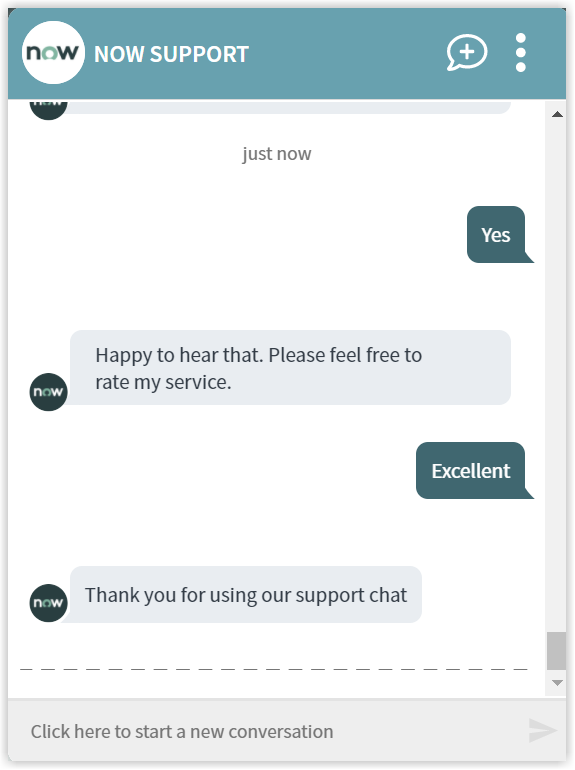Revoke Folder Access
An end-user can revoke access to a shared folder. The Virtual Assistant then provides support to revoke access to a shared folder.
What you need to enable the Revoke Folder Access topic
The following Tachyon instructions must be added to your Tachyon system:
1E-Explorer-ServiceNow-RemoveAccessSharedFolder
When this instruction is executed it removes access to a shared folder on an absolute or network path.
How your end-users request to Revoke Folder Access
The Virtual Assistant is integrated into the ServiceNow Virtual Agent accessible from the ServiceNow Portal. Please refer to Starting a conversation with 1E Virtual Assistant for more details on how to access the ServiceNow Virtual Agent and how to get to the Virtual Assistant topics.
Selecting the Revoke Folder Access topic using the search field
Your end-user can type any of the following keywords to find the Revoke Folder Access topic:
Revoke folder access
Remove folder access
Shared folder.
The picture opposite shows the end-user has typed revoke folder access into the search field and Matching Requests shows the Revoke Folder Access topic that has been found.
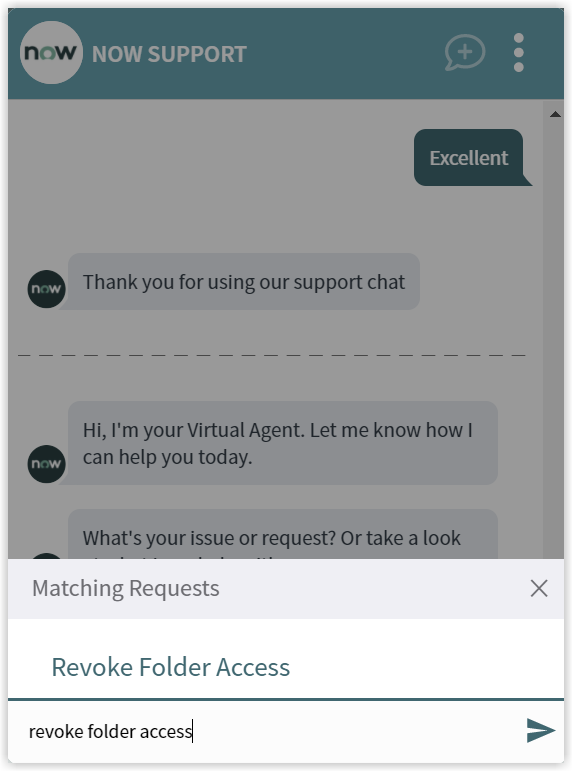
The Revoke Folder Access actions and instructions
Selecting theRevoke Folder Access option prompts the virtual assistant to start the process identifying the end-user and displays list of all the devices assigned to him/her. The virtual agent prompts the end-user to select the device on which he/she wants to perform the action.
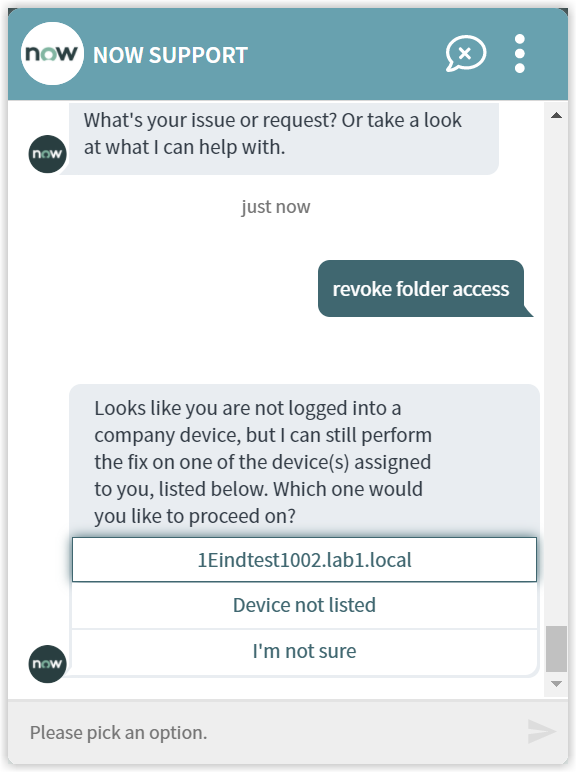
Upon selection of the device, the Virtual Agent asks end-user to provide the folder path from which the access is to be revoked.

Once the name of the folder path is keyed, the end-user is asked to provide the name of the user from whom access is to revoked.

After providing the folder path and user name, the virtual agent successfully revoked the access from the given user.
It then asks whether the issue that the end-user raised has been resolved. The end-user gets to respond with Yes or No, as shown in the picture opposite.
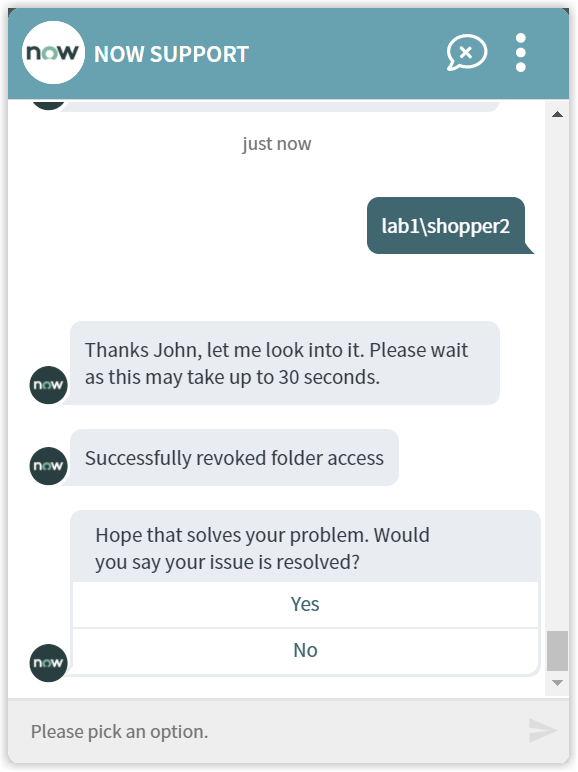
Rating the Virtual Assistant
After respondingYesthe end-user is then asked for a rating:Poor,GoodorExcellent.
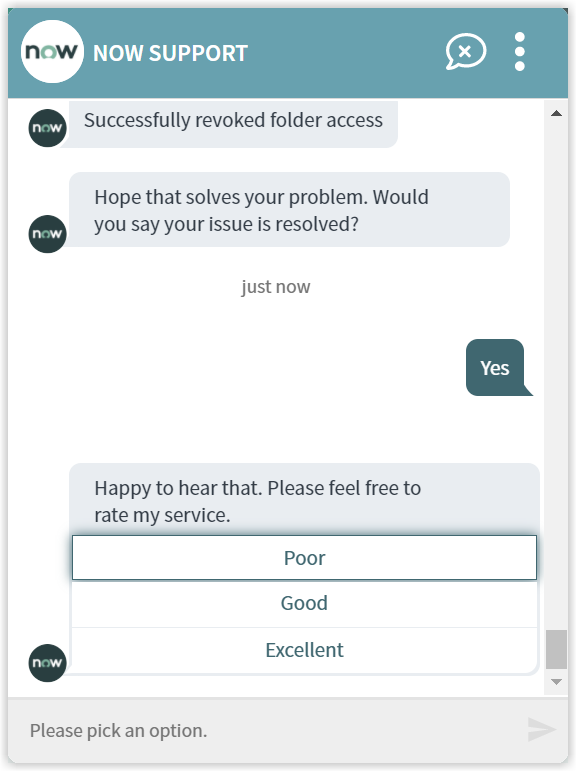
In our example the end-user selects the Excellent option and the Virtual Assistant completes the conversation.
The rating is a default part of all the Virtual Assistant topics this can be changed if you don't want your end-users to be prompted whenever they select an action. Please refer to Changing the behavior of a Virtual Assistant topic for more details.
